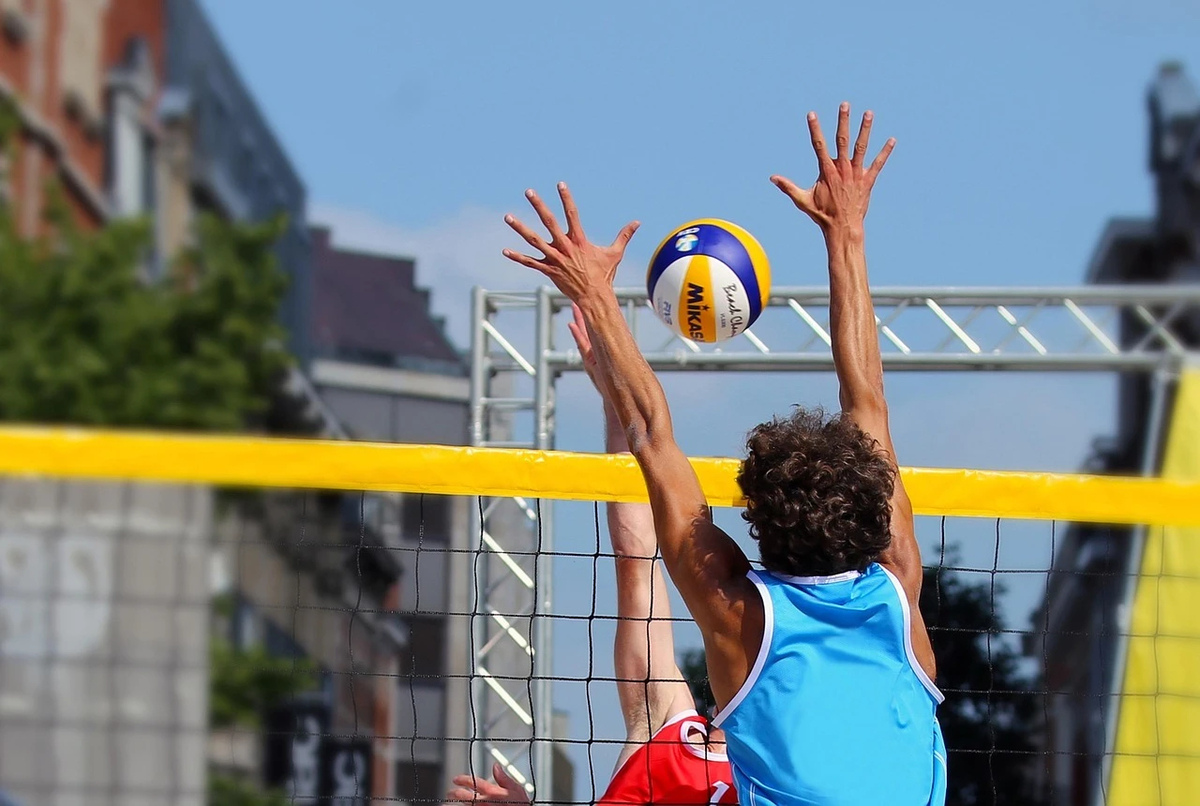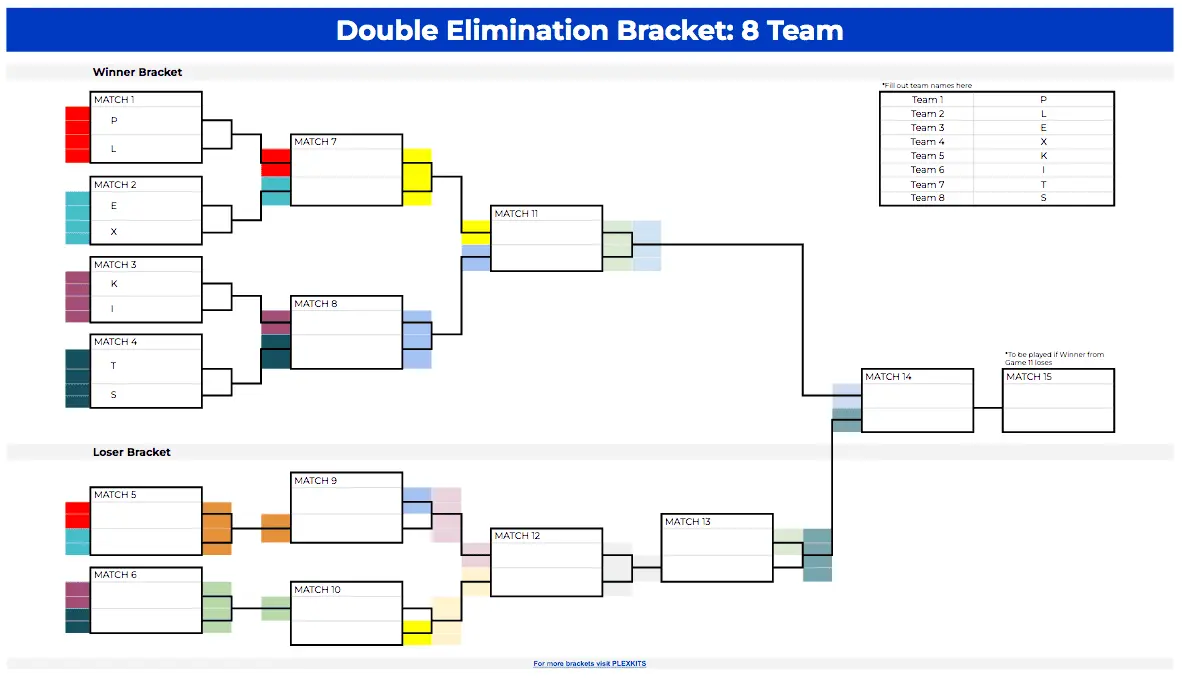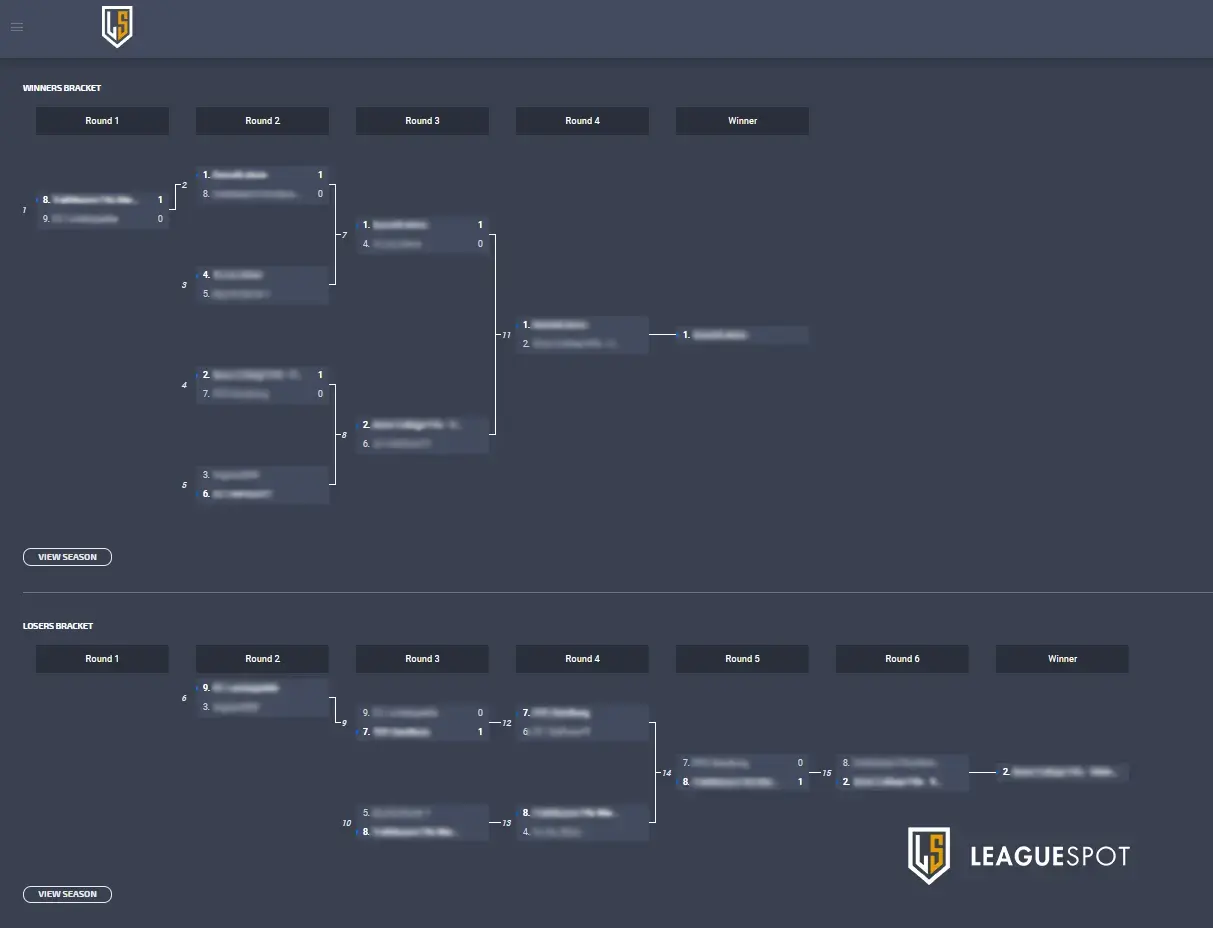Understanding the Double-Elimination Tournament Format

If you’re running a competition, planning an esports event, or just curious about tournament formats, you’ve probably heard of a double elimination tournament. It’s one of the most popular ways to balance fairness and excitement, giving every competitor a second chance before they’re knocked out for good.
In this guide, we’ll break down what a double elimination tournament is, how double elimination works, and how to set up a double elimination bracket. We’ll also explain how double elimination tournament brackets operate, and share why this format is favored across gaming, sports, and competitive events worldwide.
What Is Double Elimination?
When people ask “what does double elimination mean?”, the answer is simple: it’s a tournament format where a player or team must lose two times before being eliminated.
In a single-elimination setup, one loss sends you home. But in a double-elimination tournament format, losing once only drops you into a “second chance” bracket, often called the losers’ bracket. Lose again, and you’re officially out.
So, in short, what is double elimination?
It’s a tournament structure where every participant has two lives. That’s the essence of double elimination meaning - you get a shot at redemption.
What Is a Double-Elimination Tournament?

Source: Plexkits
A double-elimination tournament begins with all competitors placed into the winners’ bracket. Every match sends its winner forward and its loser down to the losers’ bracket.
The losers’ bracket acts like a safety net. Competitors there fight their way back up, hoping to reach the finals and face the undefeated player from the winners’ side.
The double elimination tournament brackets visually show this journey, with the upper section representing winners, and the lower section showing those fighting their way back. Together, these two brackets make up the full tournament bracket double elimination layout.
How Does Double Elimination Work?
Let’s walk through exactly how double elimination works step by step.
Step 1: Start in the Winners’ Bracket
Every participant begins in the winners’ bracket. Winners continue advancing, while losers fall into the losers’ bracket.
Step 2: The Losers’ Bracket
Once in the losers’ bracket, competitors can’t afford another loss. A second defeat means elimination.
Step 3: Moving Through Both Brackets
The winners’ bracket narrows down to one undefeated finalist. Meanwhile, the losers’ bracket produces a finalist who has lost once but fought through every other challenger.
Step 4: The Grand Final
The grand final is where the two paths meet: the undefeated team from the winners’ bracket versus the survivor from the losers’ bracket.
Since the winners’ bracket finalist hasn’t lost yet, many double elimination tournament formats require the losers’ bracket finalist to beat them twice: once to “reset” the bracket (give them their first loss), and again to win the championship.
This “you must lose twice” principle is what defines what is double elimination bracket play.
Example: How a Double Elimination Bracket Works
Let’s visualize how a double-elimination bracket works using an eight-team example.

Source: LeagueSpot
Teams: A, B, C, D, E, F, G, H
Round 1 (Winners’ Bracket)
-
A vs H → A wins (H drops to losers’ bracket)
-
B vs G → B wins (G drops down)
-
C vs F → C wins (F drops down)
-
D vs E → D wins (E drops down)
Now, the winners (A, B, C, D) move forward in the winners’ bracket. The losers (E, F, G, H) move to the losers’ bracket.
Round 2
- Winners’ Bracket: A vs D, B vs C
- Losers’ Bracket: E vs H, F vs G
The losers’ bracket keeps trimming away anyone who loses again; they’re eliminated after their second defeat.
By the end, one team remains undefeated (say, Team A) and one team survives through the losers’ bracket (Team C).
They meet in the grand final. If Team C beats Team A once, the bracket resets. If Team C beats Team A again, Team C wins it all.
This is exactly how double elimination brackets work: one loss moves you down, the second knocks you out.
How to Set Up a Double Elimination Bracket
You might be wondering: how to set up a double elimination bracket or how to do a double elimination bracket? Here’s your complete roadmap.
1. Determine the Number of Participants
Decide how many players or teams will compete. If the number isn’t a power of two (like 8, 16, 32), you’ll need byes to fill the bracket evenly.
2. Seed Your Players or Teams
You can seed based on rankings or random draws. Seeding matters because it influences the early matchups in your tournament bracket double elimination layout.
3. Build the Winners’ Bracket
Start by pairing everyone in the winners’ bracket. Winners advance, losers move to the losers’ bracket.
4. Build the Losers’ Bracket
This bracket begins empty, but fills as players lose in the winners’ bracket.
Keep your losers’ bracket structured so new drop-ins have opponents waiting; most online tournament planners handle this automatically.
5. Decide the Grand Final Rules
Will the losers’ bracket winner need to beat the undefeated team twice (full reset), or just once? Clarify this before the play begins.
6. Schedule Matches and Update Results
Update both brackets after every round. Keep your participants informed and the visuals public.
7. Manage Timing and Fatigue
Because the losers’ bracket involves more matches, plan accordingly. Players coming from the losers’ side might face multiple rounds in one day.
By following these steps, you’ll know how to run a double elimination tournament smoothly and fairly.
Advantages of the Double Elimination Tournament Format
Why do organizers prefer this format over single elimination? Let’s look at the main benefits.
1. Fairer Results
In a double-elimination tournament, a single bad performance doesn’t end your journey. It’s more forgiving and often ensures the best team wins.
2. More Matches for Everyone
Because no one is out after one loss, participants get at least two matches. This keeps everyone more engaged and satisfied.
3. Dramatic Comebacks
The losers’ bracket can produce incredible storylines. Many fans love the drama of a team clawing its way back to the finals.
4. Reduces Luck Factor
Double elimination helps ensure consistent performance matters more than luck: one fluke doesn’t eliminate top contenders.
Drawbacks and Considerations
No format is perfect. Here’s what to keep in mind before choosing double elimination tournament brackets for your event.
1. More Matches, More Time
Running a double elimination tournament means twice as many rounds. If time or space is limited, this format can stretch your schedule.
2. Complex for Beginners
Explaining what double elimination bracket play is to new participants can take time. Always show them a visual bracket before you start.
3. Possible Fatigue
Players coming through the losers’ bracket often have to play more matches back-to-back than those staying in the winners’ bracket.
4. Unbalanced Finals
Some people argue that the undefeated player in the winners’ bracket has an advantage in the finals. Others think that’s fair. After all, they’ve earned it.
Double Elimination Tournament Tools
If you’re planning to host your own double elimination tournament, you’ll need an intuitive and reliable way to build and manage your brackets. The best choice for this is MyCup.me - a clean, flexible platform that makes it effortless to create, customize, and share double elimination tournament brackets for any kind of event.
Why Use MyCup.me?
-
🏆 Full Double Elimination Support: MyCup.me automatically handles both winners’ and losers’ brackets - you don’t have to calculate match drops manually.
-
⚙️ Instant Bracket Generation: Enter your participants, choose a format, and the site builds the bracket instantly.
-
📱 Mobile-Friendly: Perfect for organizers managing tournaments on the go.
-
📊 Live Updates: Scores, rounds, and eliminations update in real time.
-
🎨 Custom Branding: Add your own event name, logo, or sponsor details.
Whether you’re running an esports league, a local gaming event, or a small sports competition, MyCup.me makes setting up and running your double elimination tournament format straightforward and professional.
When Should You Use a Double Elimination Tournament?
A double elimination tournament format is best when you want:
-
Fairness and competitiveness.
-
A chance for strong teams to recover from one poor match.
-
Extra content or matches for spectators.
-
Enough time to handle a longer schedule.
Avoid it when:
-
You’re limited on time or space.
-
Your participants expect a quick, one-and-done competition.
-
The complexity might confuse beginners.
When managed well, though, a double elimination tournament often produces the most exciting and fair outcomes of any bracket style.
Key Takeaways
-
Double elimination meaning: A participant must lose twice to be eliminated.
-
What is a double elimination bracket: A two-part bracket with winners and losers sides.
-
How does double elimination work: Lose once → drop to losers’ bracket; lose twice → you’re out.
-
How to set up a double elimination bracket: Plan seeding, build both brackets, and decide final rules.
-
How to run a double elimination tournament: Manage scheduling, communicate clearly, and keep brackets updated.
The double elimination tournament format balances fairness, drama, and excitement. It’s more complex than single elimination, but it rewards consistency and resilience, making it perfect for events where you want the best to truly earn their victory.
Final Thoughts
If you’ve ever watched an esports event or a local gaming competition where a team battled their way through a losers’ bracket to win it all, you’ve already seen the power of double elimination in action.
This format captures the spirit of competition - fight, fail, adapt, and fight again.
Once you understand what a double elimination tournament is, how a double elimination bracket works, and how to run a double elimination tournament, you can create an event that’s fair, thrilling, and rewarding for everyone involved.
Whether you’re hosting a small local league or a large-scale online event, mastering the double elimination tournament brackets will elevate your competitions from good to unforgettable.
FAQs
What Does Double Elimination Mean?
It means a player or team must lose two times before being eliminated from the tournament.
What Is a Double Elimination Tournament?
It’s a competition format that includes both a winners’ bracket and a losers’ bracket, giving every participant two chances to stay in the event.
What Is a Double Elimination Bracket?
It’s the bracket layout that displays how players progress in the winners’ bracket, drop to the losers’ bracket, and potentially climb back to the finals.
How Does Double Elimination Work?
Competitors start in the winners’ bracket. If they lose once, they drop into the losers’ bracket. If they lose again, they’re out. The winners of both brackets meet in the grand final.
How Do Double Elimination Brackets Work?
Winners advance through the top bracket. Losers drop down to the lower bracket. Once a competitor loses twice, they’re eliminated.
How to Do a Double Elimination Bracket?
Draw both a winners’ and losers’ bracket, schedule your matches, and move participants according to results after each round.
How to Set Up a Double Elimination Bracket?
Use a bracket-making tool like MyCup.me. Enter your participants, select “Double Elimination,” and the system generates your full bracket automatically.
How to Run a Double-Elimination Tournament?
Track results, update both brackets after every round, and clearly communicate when and where teams play next. Plan extra time for the additional matches that come with this format.
How to Calculate Double Elimination?
To calculate double elimination, remember that the total number of matches is always (2 × N) − 2, where N is the number of participants.
For example:
-
8 players → 14 matches
-
16 players → 30 matches
-
32 players → 62 matches
This formula accounts for every round in both the winners’ and losers’ brackets, plus the final (and potential reset match).
Bracket tools like MyCup.me handle these calculations automatically. They update the total match count, rounds, and scheduling as you enter results.
Is Double Elimination Fair?
Yes, many consider double elimination the fairest of the elimination-based formats. It gives every participant two opportunities to prove themselves. It balances competitiveness with forgiveness: a single mistake won’t end your run, but consistency is still rewarded.
What Are the 4 Types of Tournaments?
The four main types of tournament formats are:
-
Single Elimination: Lose once, you’re out. Fast but unforgiving.
-
Double Elimination: Lose twice before you’re out. Offers a fairer system.
-
Round Robin: Everyone plays everyone. Best for small groups and league-style play.
-
Swiss System: Players face others with similar records each round. Popular in chess, card games, and esports qualifiers.
Published 28 October, 2025